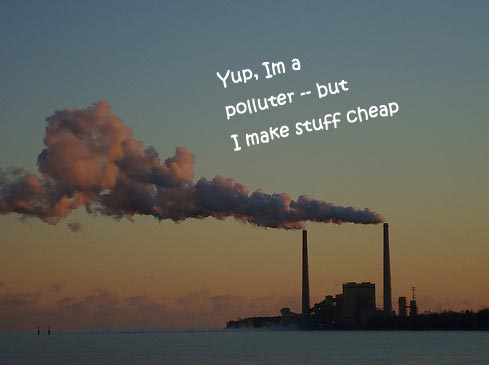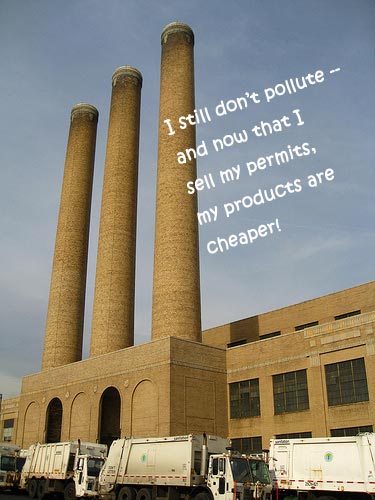Cap and trade
The fourth idea above -- tell companies they can make money by selling (rather than using) their right to pollute -- is at the heart of a method of dealing with pollution called "cap and trade". Here's how it works:
The CAP part: the government decides how much pollution happens and gives out permits. In other words, the government "caps" the level of pollution that is permissable. And yes, they give out permits to pollute!
The TRADE part: Each company can decide whether or not to use their permits. If they don't use the permits, they can sell them to someone who will. So, those companies that DON'T pollute actually benefit, rather than getting penalized. In addition, the government can choose to buy some permits and "retire" them, resulting in even less pollution. If there aren't enough permits for everyone who wants to pollute, then the permits become more valuable, and companies have to pay more to pollute.
Notice that the goal of cap-and-trade is to influence companies, who will pass on the price of the permit to their consumers. This is seen as OK, because a company that pollutes a lot will have to raise its prices more than a green company, so more people will want to buy green.
Cap-and-trade can reverse a lot of problems that "green" companies have. Normally green products are more expensive, and green companies have a hard time competing, because they are imposing a limitation on themselves that makes the product more expensive (remember how Hardin said that "conscience is self-eliminating"?). But cap-and-trade forces all companies to pay the true cost of their own pollution, making green products more competitive.
Cap-and-trade in fewer words
Before cap-and-trade ...
 |
 |
... and after ...
 |
 |
Copyright University of Maryland, 2007
You may link to this site for educational purposes.
Please do not copy without permission
requests/questions/feedback email: mathbench@umd.edu